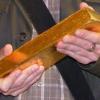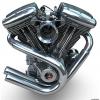At least you went to the section on "8.3 Future Investigations of NR as a Health Promoting Agent" Many here are just waiting for the comments from those who have read it. I'm not alarmed because there is so much more overwhelming evidence of the health benefits.
In another passage he says "NR did not oppose hyperglycemia in the type 1 diabetic model but did so in the type 2 diabetic model, suggesting that neuropathy and the positive effect of NR does not depend upon increased glycemic control." So in respects to diabetes there is clearly more to study and that research will be an ongoing to discover where NR fits in and works in one disease model and not another.
The author also evaluated the other NAD precursors in some head to head tests by attaching heavy atoms to track the paths. So I think he went a long way towards a fair evaluation. He also revisited the idea that NR is a superior precursor to NMN and that NMN appears to be converted to NR extracellularly. I can see some fight coming from the Sinclair camp down the road. For now price separates the 2 molecules, so its a mute argument either way unless you can afford NMN which many here can not. Ref "I compared the kinetics of NR versus NMN using stable isotope technologies and revealed NR is a superior precursor to NMN and that NMN appears to be converted to NR extracellularly." So I'm glad to see some head to head tests.
He references a large increase in NAAD that occurred around the same time as NAD+ elevation. This was a surprise because NAAD was thought to to be synthesized from tryptophan and NA, not from NR. So in this I think the NR to NAD metabolism needs some more study because this was a finding that came clearly from left field.
I also found some other reading interesting about where the NAD peak was found in the Human trials:
"In the human subject’s PBMCs at 7.7 and 8.1 hours post ingestion, NAD+ and Me2PY reached peak levels, increasing above baseline concentrations by 2.7-fold and 8.4-fold respectively. At these time points, unexpectedly, NAAD, the substrate of glutamine-dependent NAD+ synthetase (12), which is only expected to be produced in biosynthesis of NAD+ from tryptophan and NA (129), was elevated from less than 20 nM to as high as 0.91 μM. Whereas NAAD lagged the rise in PBMC NAD+ by one time point, the rise in PBMC NAD+ was not as pronounced as the spike in NAAD, which was at least 45-fold above the baseline level. Though contrary to expectations, these data suggested that NR might be incorporated into NAAD after formation of NAD+ and chased back to the NAD+ peak as NAD+ declines." I'm sure my interpretation is lacking in many ways but it looks like after a peak in NAD is reached NAAD becomes the storehouse place holder and is utilized as NAD levels drop to begin producing NAD again. Someone else can comment.
At this point I've read his thesis and a few points stood out but it will be several days before I can seriously comment and see where we can find insights into our regiments. One nagging thing I really wanted answered were half-life questions and the Peak NAD timeframes came later after ingestion than I expected. As always JMHO
































 This topic is locked
This topic is locked



















